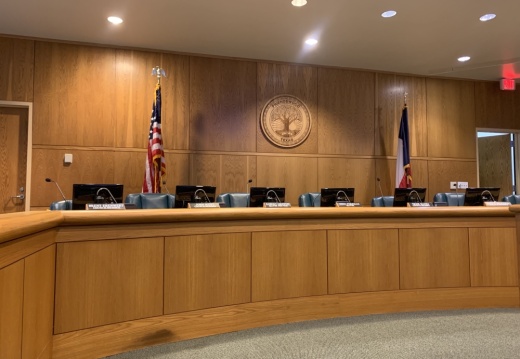The details
Friendswood City Council voted unanimously at its May 5 meeting to support the Lower Clear Creek and Dickinson Bayou Watershed 203 Feasibility study, which will identify infrastructure projects and funding strategies to reduce future flood risks.
League City initiated the study due to the widespread damage caused by major storms over the past few decades, including Hurricane Carla, Tropical Storm Claudette, Tropical Storm Allison and, most recently, Hurricane Harvey. These storms caused widespread damage to homes and infrastructure throughout the Greater Houston area, particularly areas near the Clear Creek and Dickinson Bayou watersheds, such as Friendswood.
The United States Congress adopted the study’s first phase, which began in 2019, in the Water Resource Development Act of 2022, according to agenda documents.
Spearheaded by League City, the project involves 23 government entities, including Friendswood, the U.S. Army Corps of Engineers, Harris County Flood Control District, Galveston County and the Galveston County Consolidated Drainage District, according to League City’s website.
Why it matters
In the Lower Clear Creek portion of the watershed, riverine flooding during a 100-year storm event could impact more than 2,500 structures in the area, causing an estimated $685 million in damages, according to a March 2023 letter from U.S. Rep. Randy Weber, R-Friendswood, where he asked the Energy and Water Development Subcommittee to fund $1.5 million for the study.
In the Dickinson Bayou area, nearly 9,000 structures could be affected, with potential damages exceeding $900 million.
In addition to property loss, the letter highlighted that flooding could severely impact I-45—the main evacuation route between Galveston and Houston. If I-45 is submerged, access to Galveston County would be largely cut off, leaving only other low-lying Gulf Coast roads as alternatives.
What they’re saying
Prior to the vote, Galveston County Commissioner Hank Dugie spoke at the meeting and offered his support for the study.
“We all know that we are in a flood-prone area, and if we want to solve our flooding problems, we have to address the main channel,” Dugie said. “So this study is going to take some of those bigger concept ideas, refine them and then turn them into actual, actionable projects that the federal and state governments will participate in.”





